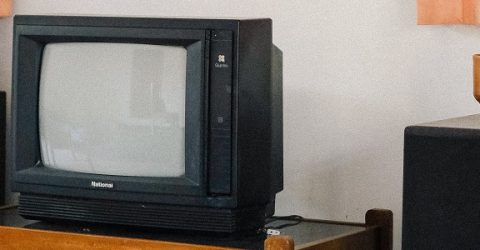Whatever happened to Ceefax and Oracle?
Ceefax and Oracle provided many people’s first exposure to interactive digital services, and their legacy lives on in unexpected ways

In today’s multimedia internet age, it might seem remarkable that Ceefax and Oracle were the World Wide Web of their day.
Introduced in the 1970s, these interactive information services provided millions of people across the UK with their first taste of on-demand digital content.
You didn’t need a computer, a phone line or even a good knowledge of technology to use either service – just a TV with a remote control.
And while Ceefax and Oracle are no longer with us, their legacy lives on…
A life less ordinary
The idea of receiving digital content through a TV screen was pioneered by the advanced software used to underpin the BBC’s Ceefax service, and ITV’s Oracle alternative.
Both services launched in 1974, based around the principles of displaying coded line electronics on TV sets as part of the standard analogue signal received through TV aerials.
MoreWhat’s it like to live without the internet in 2021?
Remote controls were used to enter hierarchical three-digit numbers which loaded specific pages, with 100 serving as a homepage on both services.
The BBC’s structure became familiar to millions of people – news headlines published at 101, sport starting at 300, with TV and radio guides beginning at 600.
ITV and Channel Four used the largely similar Oracle system (often represented in uppercase), before it was replaced by the comparable Teletext platform at the start of 1993.
On the same page
Regardless of your preferred platform, many of these services were similar. You could check travel information, read local news stories and even catch up on the latest music trivia.
News and sport were core services, while peripheral content like personal ads, text-based soap operas and holiday adverts came and went.
Pages with more than one than one screen’s worth of information to display rotated in sequence, indicating which screen (1/4) was on show at that particular moment.
The three-digit page structure was designed to be easy to understand, and like dial-up internet, it took a moment for a requested page to be loaded and displayed.
Ironically, it was the launch of the equally sluggish World Wide Web in 1991 which spelt the end for the likes of Ceefax and Teletext.
The Web merely built on technology that had seen websites being launched around the world for several years, and it was strongly reminiscent of the Post Office’s 1980s Prestel service.
Yet it popularised digital communications by being easier to use than the early internet and far cheaper than Prestel, while offering multimedia capabilities way beyond Teletext.
After all, Ceefax and Teletext were limited to large text and crude, blocky pictures.
They were incapable of displaying photos, videos or animations.
Even their cherished subtitling service was replaced by a less blocky version – though subtitles were arguably more accurate in the 1990s than they are today.
As the Web grew in popularity, the use of digital teletext services fell until they were no longer cost-effective to run.
There was something undeniably sad about the final hours of Ceefax in particular, which had been around for almost four decades and outlasted its ITV/C4 rivals by twenty years.
The final Ceefax page displayed just before 6am on Monday the 22nd of October 2012. It simply read “BBC Ceefax 1974 – 2012 Thanks for watching”.
And then it was gone.
Leaving a lasting legacy
Ceefax and Teletext were switched off in 2012, but the legacy of both platforms endures to this day.
Interactive text based services from the BBC continue through the Red Button service on digital terrestrial TV.
This was scheduled to be deactivated at the end of last year, but earned a reprieve after a concerted campaign secured its place for another few years at least.
And while fringe services will be scaled back later this year, the Red Button continues to offer news, sport and weather through a three digit root structure controlled by a TV remote.
MoreWhat can you still do with the Red Button?
Teletext also lives on in the Teletext Holidays service, which made its debut when this services launched in 1993 and became so successful that it transitioned to the internet.
Although Ceefax and Oracle are no longer with us, their descendants look set to live on for some time yet.






